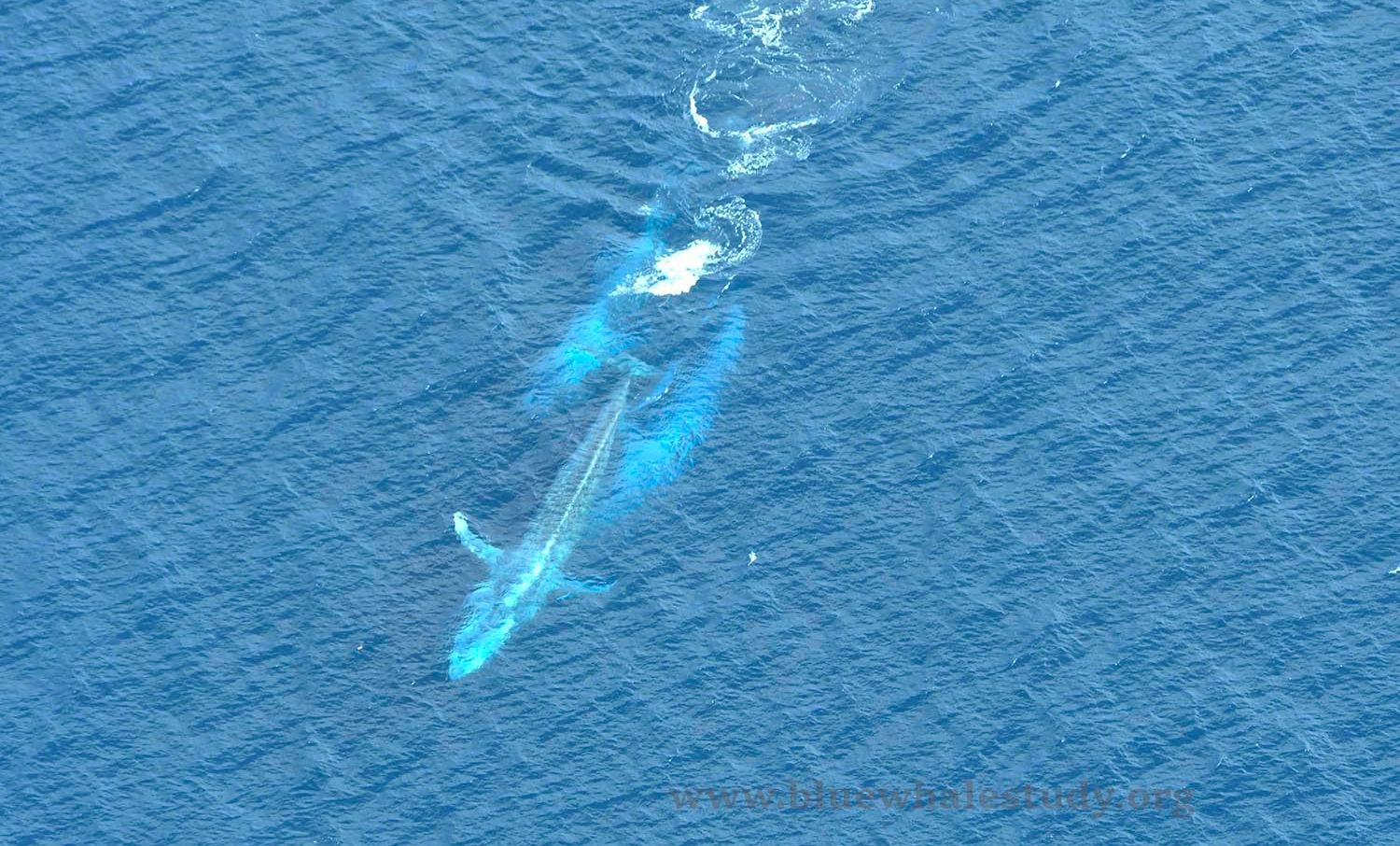Male blue whales have been witnessed battling for the chance to mate with a female off the coast of Australia in arguably the most formidable combat on Earth.
When male whales sense a female is fertile, they start to follow her. In many whale species, the female leads the males on a dance. The males use their bulk against each other to try and gain an advantage and be her “escort”. Collectively, all involved are known as a racing group.
While such events have been witnessed many times for humpbacks, among others, blue whales are both rarer and more inclined to stay away from humans. Consequently, sightings of these events in the largest animals on Earth are exceptionally rare, but Dr Peter Gill of Blue Whale Study is one of the few to have seen it.
In late March, Gill was surveying the waters off eastern South Australia and witnessed the classic signs of a racing group.
“The frequent changes of pace and direction were clearly dictated by the female, and the males did their best to stay close to her, while trying to outpace and physically displace each other,” Gill wrote on Blue Whale Study’s Facebook page. “It was a spectacular display of massive power and grace, one of the great sights in nature.”
Just as the ground shakes when elephants make love, Gill told the ABC the race could be dangerous for anyone in the vicinity, such as a boat that unwisely ventured into the whales’ path. “You’ve got three of these massive animals just engaged in this full-on combat between the two chasing males,” he said. “They’re shouldering each other aside and hitting each other with their tails a bit.”
The female whale gets some clear space, as the males were too focused on fighting each other to stay with her.
Image courtesy of Blue Whale Study/Dr Peter Gill
Gill could not definitely confirm the sex of the whales he was watching from that height, but his observations closely match those of a Canadian team who were able to get biopsies.
Gill told IFLScience, “Humpbacks take it to extremes,” with seven or eight males in a racing group competing to be the escort, and southern right whales also have larger parties. However, in the rare cases blue whale racing groups have been reported, only two males have ever been involved. “Blue whales are still slowly recovering from their decimation [by whaling]” Gill said. “We don’t know what their social ecology was like before whaling really devastated them.” Consequently, we can’t tell if having only two suitors was how it was always done.
Despite the excitement, Gill was alarmed to see the female looked very underweight, although the males looked healthy. He told IFLScience that since 2007 increasing numbers of “skinny whales” have been spotted among the blue whale population. “We don’t know if this is related to climate change or not,” he added.
The situation is unlikely to improve this year. The Australian blue whale population spends summer and autumn feeding off the southern coast where a major upwelling makes nutrients abundant at these times, usually leading to an explosion of krill. Unlike humpbacks, which get most of their food in one season before relying on their blubber to get them through the lean months, the blue whales can’t fast as long. Instead, they migrate to Indonesia where there breeding grounds are also rich in food.
This year the upwelling was particularly strong, Gill told IFLScience, but it brought very little krill, for reasons colleagues are still trying to work out. This follows a disturbingly late southward migration last year that may have been associated with reduced food in Indonesian waters, although Gill said the connection is still unconfirmed.
It’s been 21 years since Gill previously spotted blue whales racing off Australia. Aside from the Canadian encounter, the event has been reported off California since, but remains exceptionally rare.
The Blue Whale Study is a small non-profit that is contracted by other groups to search for whales of all species in the region. This flight was funded by Save Our Marine Life.
Source Link: Rare Photos Show Blue Whales Performing The Largest Mating Dance On Earth
